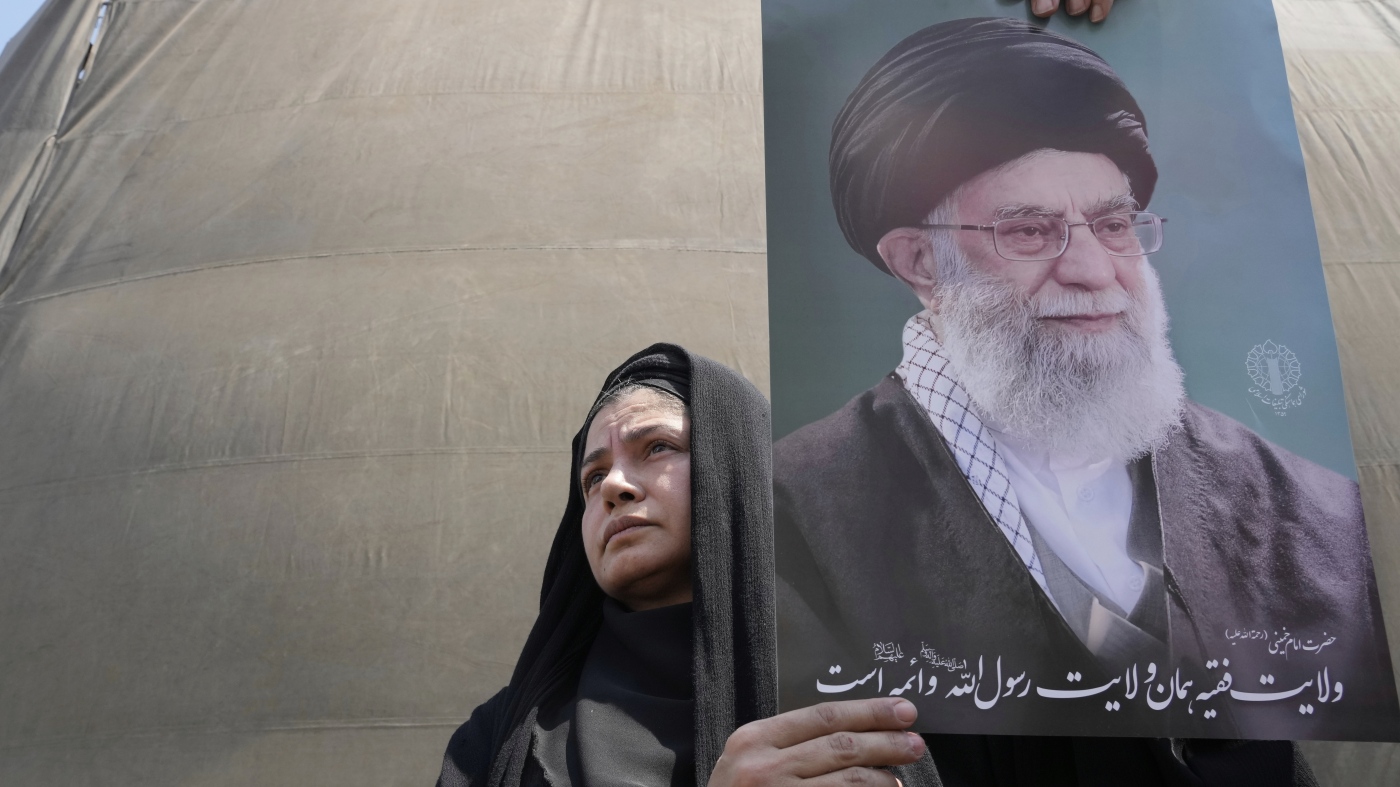Escalating Tensions in the Middle East
The Middle East is a powder keg, with Iran, Israel, and the United States standing on the brink of a precipice. The situation is tense, volatile, and fraught with the potential for catastrophic conflict. To understand the gravity of the situation, it is essential to dissect the key players, their actions, and the consequences that may arise from their decisions.
The Iranian Perspective: Khamenei’s Red Line
At the heart of Iran’s stance is Supreme Leader Ayatollah Ali Khamenei. His warnings are not mere rhetoric; they are a clear red line drawn in the sand. Khamenei has repeatedly stated that any U.S. military intervention will result in “irreparable harm” to Americans. This is a direct response to the possibility of U.S. involvement, a scenario actively considered by former President Donald Trump.
Khamenei’s warnings are significant for several reasons. Firstly, they underscore the Iranian leadership’s resolve and willingness to defend their nation, even at the cost of severe repercussions. Secondly, they highlight the potential for a direct confrontation between the U.S. and Iran, a scenario that could have devastating consequences for the region and the world.
The repeated nature of these warnings, echoed across numerous news outlets, serves as a stark reminder of the gravity of the situation. It is a call for restraint, a plea for diplomacy, and a warning of the potential consequences of military action.
Trump’s Ambiguous Posture: A Recipe for Uncertainty
Former President Trump’s role in this crisis is marked by ambiguity and provocative statements. His dual message—distancing the U.S. from initial actions while threatening overwhelming force—creates a dangerous level of uncertainty. This ambiguity is not just a matter of rhetoric; it has real-world implications.
Trump’s call for “unconditional surrender” is particularly alarming. It rejects any possibility of negotiation and sets a maximalist demand that is unlikely to be met. This stance, coupled with reports of Trump convening meetings with his national security team to discuss potential responses, paints a picture of a leader willing to escalate the conflict.
The concern is that Trump might authorize attacks on unspecified targets within Iran, further escalating the risk of a wider conflict. This unpredictability adds another layer of complexity to an already volatile situation.
Israel’s Aggressive Posture: Fueling the Fire
The current crisis is inextricably linked to Israel’s ongoing attacks on sites linked to Iran’s nuclear program. These strikes, intended to disrupt Iran’s nuclear ambitions, carry the risk of provoking a retaliatory response. The intensity and scope of these operations, with Israel claiming to have hit approximately 40 sites, demonstrate the aggressive posture of the Israeli government.
Israel’s actions are a key driver of the escalating tensions. They contribute to the sense of an impending wider war, drawing the U.S. into the conflict and increasing the potential for a catastrophic outcome. The aggressive nature of these strikes underscores the high stakes involved and the need for a diplomatic resolution.
The Potential for “All-Out War”
The warnings from Iran extend beyond a response to U.S. military intervention. Iran has explicitly stated that it views U.S. support for Israel’s actions as a provocation. This broadens the scope of potential triggers for a major conflict, making the situation even more precarious.
The potential for “all-out war” is a significant concern. It suggests that any U.S. involvement, whether direct or indirect, could lead to a full-blown conflict. This scenario is not just a matter of speculation; it is a real possibility, given the current state of affairs.
Economic Implications and Regional Instability
The escalating tensions are already having a tangible impact on global markets. Oil prices are climbing as traders anticipate increased U.S. involvement and potential disruptions to supply. Beyond the economic consequences, a wider conflict would undoubtedly destabilize the entire region, potentially drawing in other actors and exacerbating existing conflicts.
The potential for a regional conflagration is a significant concern. It threatens to derail any progress towards a peaceful resolution and has far-reaching consequences for international security. The situation is a stark reminder of the need for diplomacy and restraint.
Internal Divisions and Uncertain Futures
The situation is further complicated by internal political dynamics within both Iran and the United States. Reports suggest that Iranians are divided on the potential consequences of a Trump presidency, with some fearing an all-out war and others hoping for unexpected diplomatic breakthroughs.
Within the U.S., figures like Marjorie Taylor Greene are voicing concerns about potential backlash from the MAGA base should Trump escalate the conflict. These internal divisions add another layer of uncertainty to an already volatile situation, making it difficult to predict the future course of events.
A Dangerous Crossroads: The Path Forward
The current situation represents a dangerous crossroads. The combination of aggressive rhetoric from both sides, escalating military actions, and the unpredictable nature of the key players creates a high risk of miscalculation and unintended consequences. The world watches with bated breath, hoping that cooler heads will prevail and that a catastrophic war can be averted.
The stakes are incredibly high, and the potential for “irreparable consequences” is tragically real. It is crucial that all parties involved exercise restraint and engage in diplomatic efforts to de-escalate the situation. The path forward is fraught with challenges, but it is the only way to avoid a catastrophic conflict. The world must hope for a diplomatic resolution, for the alternative is too dire to contemplate. The future of the Middle East, and indeed the world, hangs in the balance.








